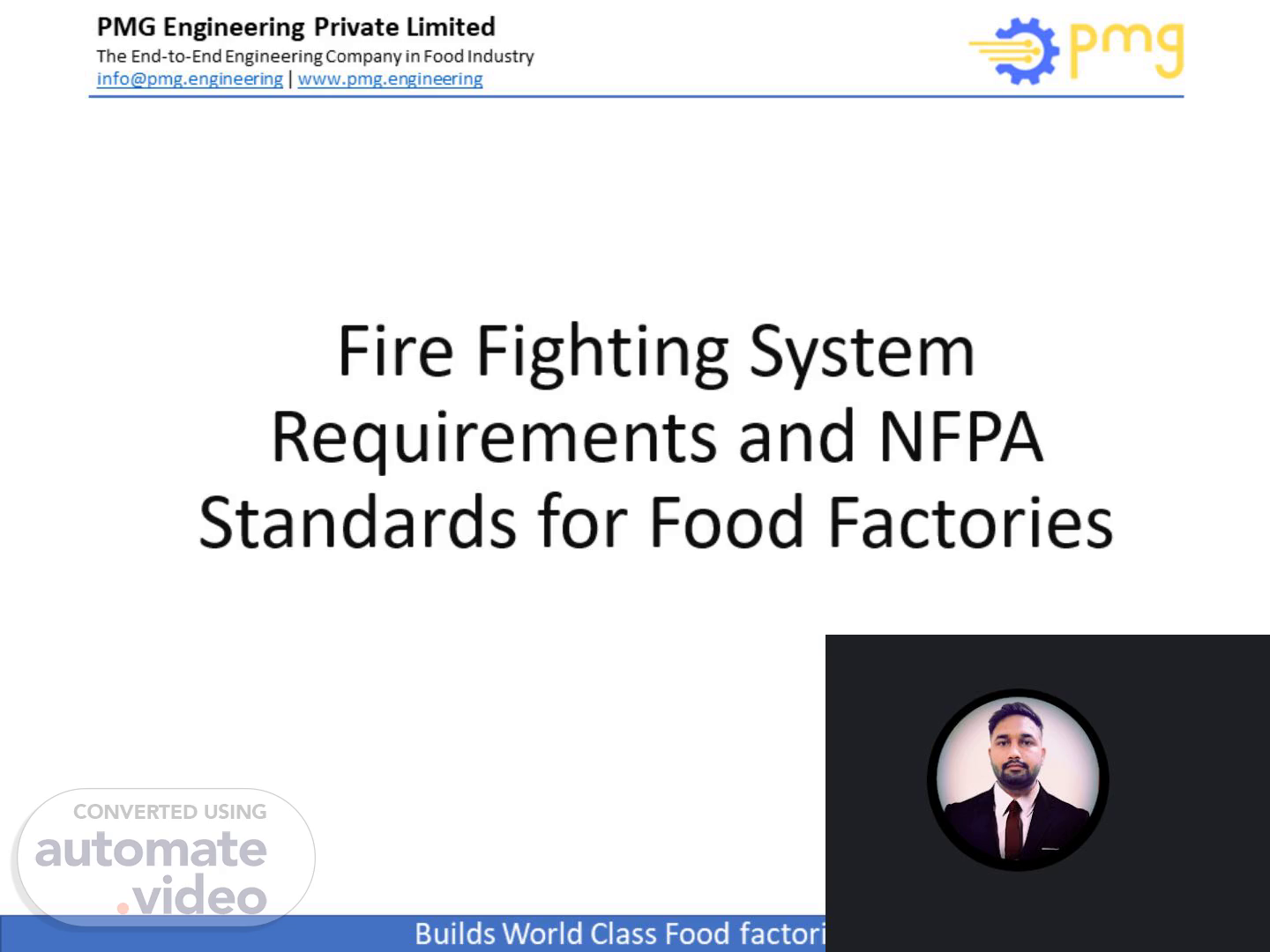
Page 1 (0s)
Fire Fighting System Requirements and NFPA Standards for Food Factories.
Page 2 (4s)
1. Introduction. 2. Ensuring Fire Safety in Food Factories: Why it Matters.
Page 3 (23s)
3. Presentation on Fire Fighting System Requirements and NFPA Standards tailored for Food Factories. Within the food industry, ensuring safety stands as our top priority, with particular emphasis on fire prevention to safeguard our workforce, assets, and merchandise. Throughout this session, we will explore the fundamental components of firefighting systems and their correlation with NFPA standards, emphasizing compliance and the assurance of safety..
Page 4 (44s)
4. Fire accidents within food factories can lead to tragic outcomes, such as loss of life, property damage, and interruptions to operations. Adhering diligently to fire safety measures not only safeguards employees but also protects valuable resources and sustains uninterrupted business operations. Taking proactive steps to implement efficient firefighting systems is essential for mitigating risks and fostering a secure work environment..
Page 5 (1m 5s)
5. The National Fire Protection Association (NFPA) develops standards and codes aimed at enhancing fire safety across diverse industries, including food processing. NFPA standards offer directives for designing, installing, and upholding fire protection systems, aiming for uniformity and dependability. Adhering to NFPA standards is crucial for food processing facilities to fulfill regulatory mandates and minimize potential liabilities..
Page 6 (1m 24s)
6. Fire suppression systems consist of several elements, such as fire detection, alarm setups, suppression mechanisms, and emergency response protocols. Each element is vital for prompt fire detection, alerting, and fire control, aiming to reduce harm and safeguard occupants' well-being..
Page 7 (1m 41s)
7. NFPA standards specific to food factories outline requirements for fire protection systems tailored to the unique hazards present in these environments. These standards address factors such as the type of food processing, storage arrangements, occupancy classification, and regulatory compliance. NFPA Standards Specific to Food Factories: NFPA 70: National Electrical Code (NEC) NFPA 10: Standard for Portable Fire Extinguishers NFPA 13: Standard for the Installation of Sprinkler Systems NFPA 25: Standard for the Inspection, Testing, and Maintenance of Water-Based Fire Protection Systems NFPA 96: Standard for Ventilation Control and Fire Protection of Commercial Cooking Operations.
Page 8 (2m 10s)
8. Design considerations for fire fighting systems in food factories include: Identification of fire hazards and risk assessment. Selection of appropriate fire suppression agents based on the nature of the. materials involved. Installation of reliable detection and alarm systems for early warning. Compliance with local building codes and NFPA standards Fire Fighting System Requirements: Types of Fire Fighting Systems (e.g., Water-based, Foam-based, Gas-based) Selection Criteria for Fire Fighting Systems in Food Factories Installation and Maintenance Requirements.
Page 9 (2m 36s)
9. Highlight real-world examples of successful implementation of fire fighting systems in food factories. Discuss best practices and lessons learned from past incidents to improve fire safety strategies. Emphasize the importance of continuous evaluation and adaptation of fire protection measures to address evolving risks..
Page 10 (2m 52s)
10. In conclusion, fire safety is a critical aspect of operations in food factories, and adherence to NFPA standards is essential to mitigate risks effectively. By investing in robust firefighting systems and staying compliant with regulatory requirements, food manufacturers can safeguard their facilities, employees, and assets. Thank you for joining us today. Let's prioritize safety and work together to create a secure environment for all..
Page 11 (3m 13s)
[image] We deliver End-to-End Engineering Design and Construction Mana ement Pro•ects in Food and Bevera e Indust.